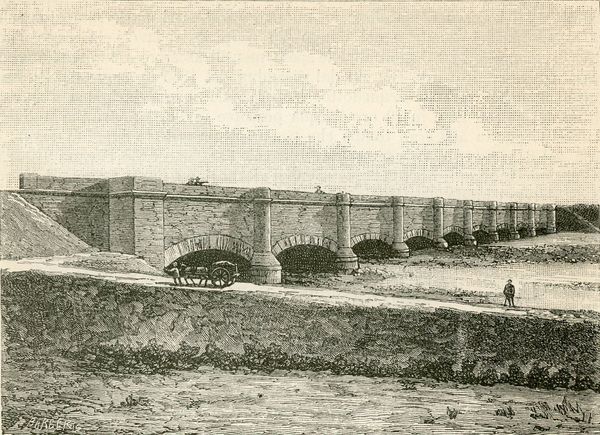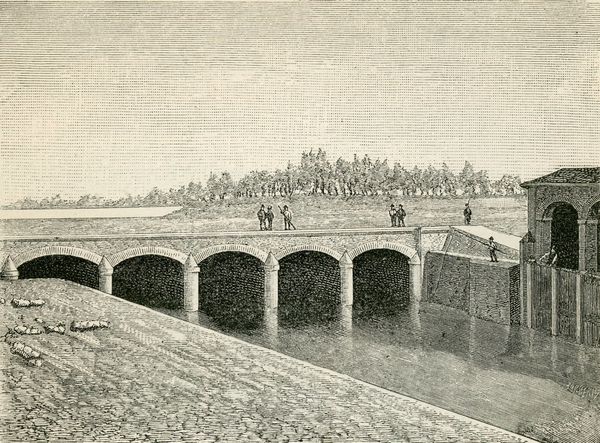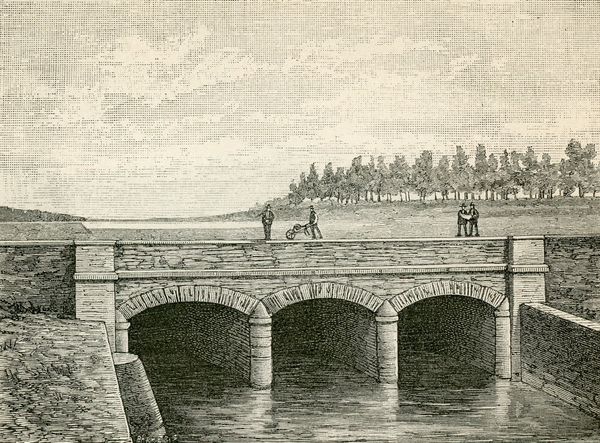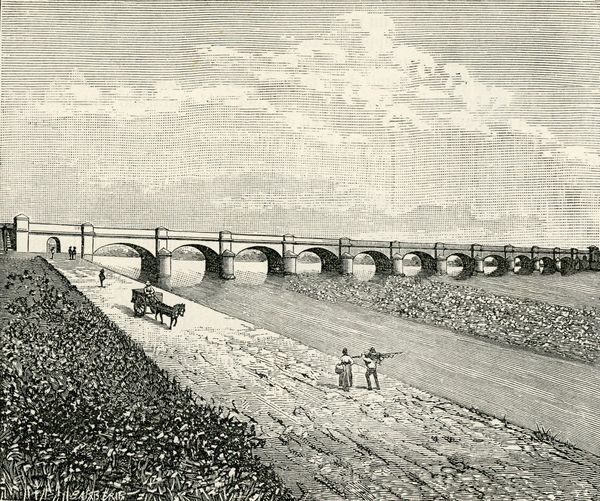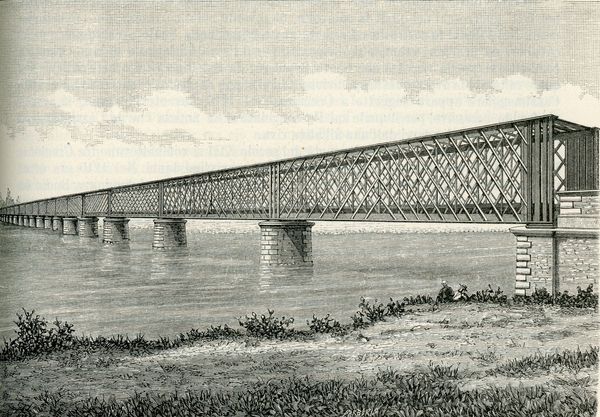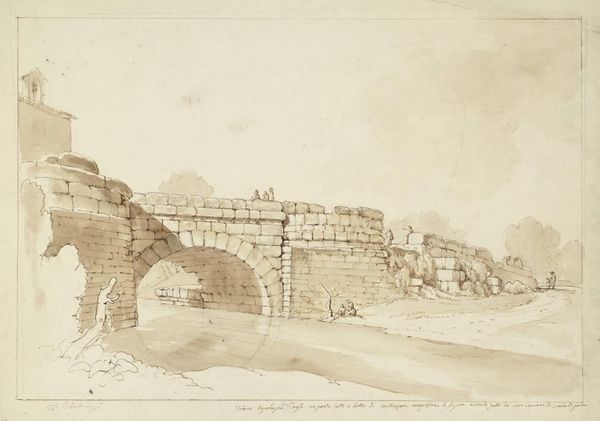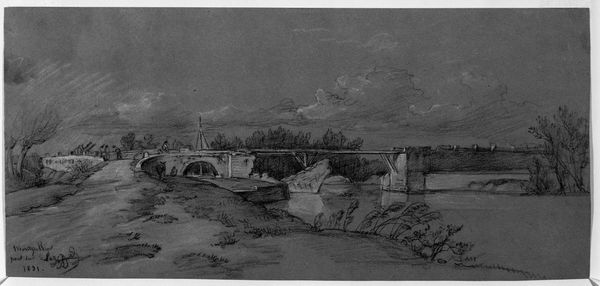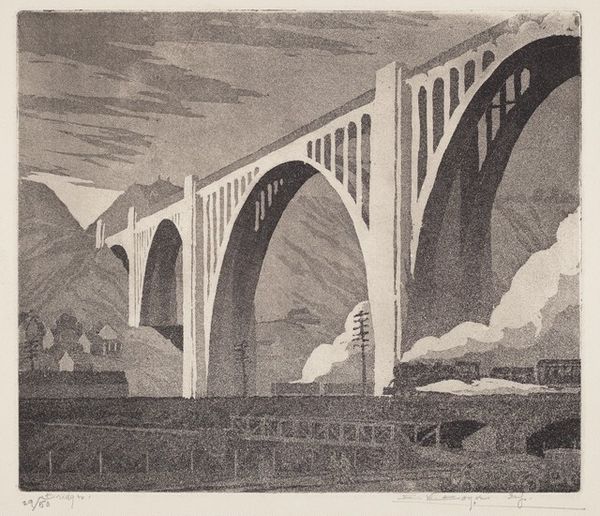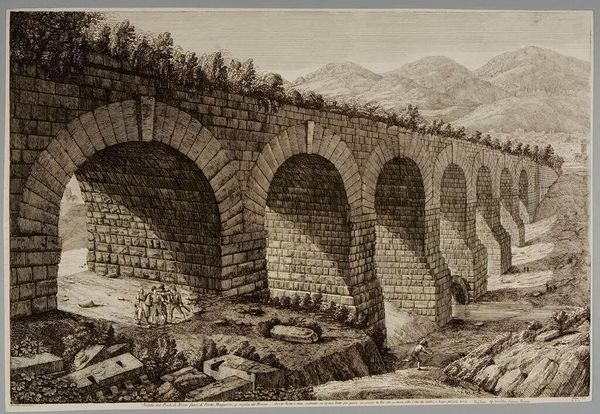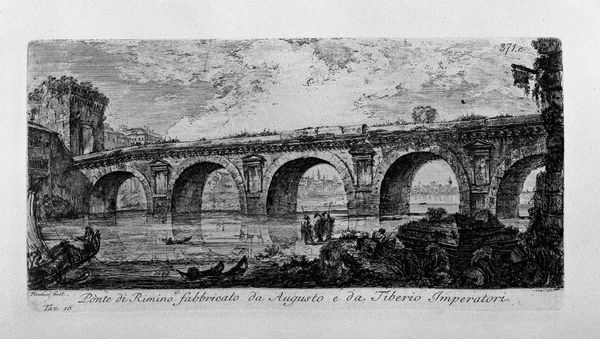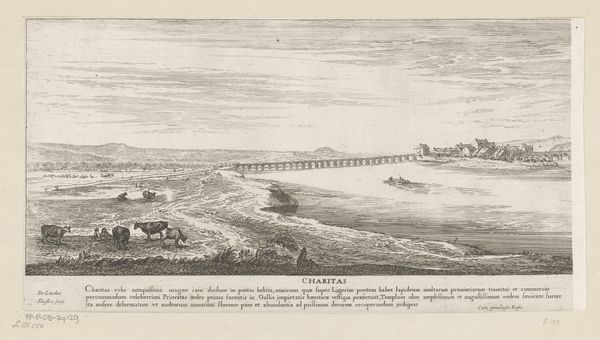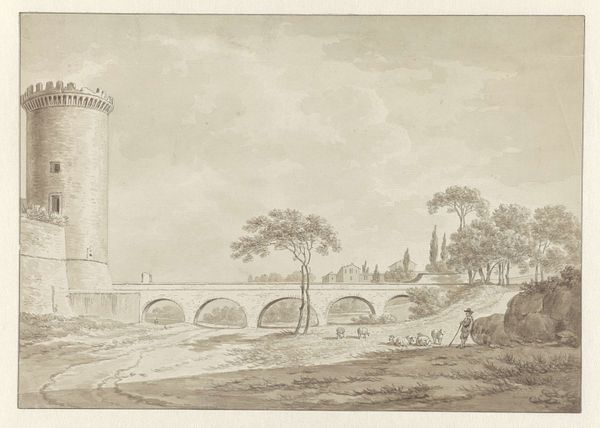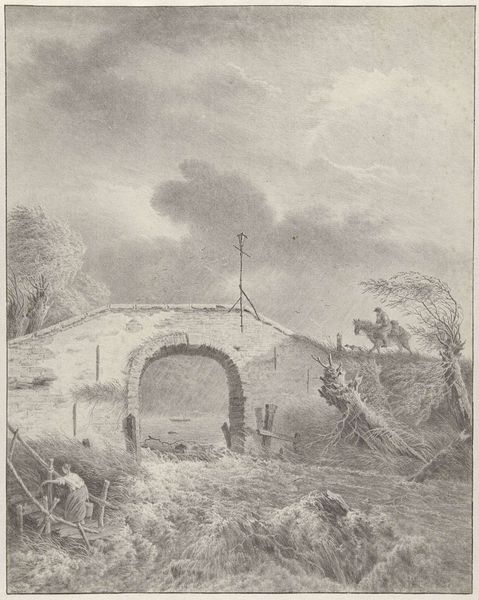
drawing, print, etching, engraving, architecture
#
drawing
# print
#
etching
#
landscape
#
etching
#
engraving
#
architecture
Copyright: Public domain
Curator: So, what are your initial thoughts on Barberis's "Ponte-canale Del Cervo" from 1890, rendered in etching, engraving, and other printmaking methods? The linear detail seems incredibly precise, almost like a technical drawing, yet there’s a softness in the overall atmospheric effect. Editor: It definitely feels meticulous. I'm struck by the contrast between the weighty stone bridge and the almost delicate rendering of the surrounding landscape. It seems to suggest a kind of…industrialization imposed on nature. I'm curious though, how would you interpret the artist's focus on this specific bridge? Curator: I find myself thinking about the labour and resources embedded in this image. Etchings and engravings require skilled hands, and the bridge itself represents immense physical effort in quarrying and construction. Consider the material origins, where each stone comes from. Editor: Yes! Now I’m thinking about who would have built this, the labour and process of creating the etching itself is highlighting labour somewhere else. That gives a whole new perspective. Did these constructions usually rely on local laborers? Curator: Precisely! Often it was local labor. And consider the canal: what resources did it transport? Who benefited from its existence? Was it equitable? Looking at this idyllic image, we need to excavate beneath the surface, to expose the socio-economic realities etched – literally – into the very fabric of the artwork. It prompts us to ask: What societal demands fueled its creation, and how was that demand met by its builders? Editor: That makes so much sense. The beauty initially draws you in, but then you realize you need to unpack the whole system of production behind it, both the bridge and the etching. Curator: Exactly. It's a reminder that art is never created in a vacuum. Understanding the materiality and processes behind art can offer profound insights into the world around us. Editor: I'll never look at an etching the same way again.
Comments
No comments
Be the first to comment and join the conversation on the ultimate creative platform.
